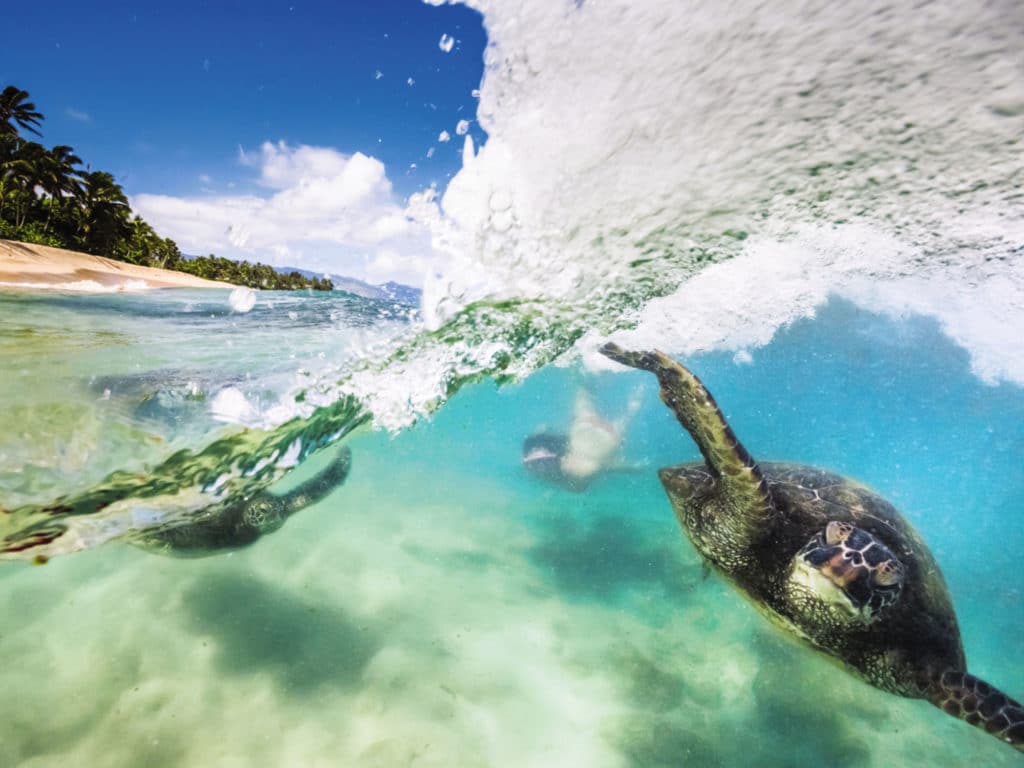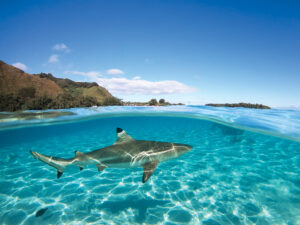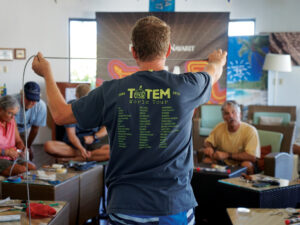
The start of a new cruising season is a time often filled with thoughts about the exciting new adventures ahead. As it should be. But it’s also a time to ponder how we, as individual sailors, can help make sailing a greener, more sustainable activity. While what follows is a far cry from mastering carbon sequestration or cold fusion, here are some simple ways we can all reduce our environmental wakes.
Chandlery choices. It’s incredibly hard to eliminate all single-use plastics, but numerous manufacturers are working to reduce our dependence on these materials. Companies including B&G, Harken and Yamaha have pledged to reduce their dependence on unsustainable packaging, and green-minded customers are encouraged to support businesses that share these ethics.
DC alternatives. Few sailors enjoy listening to marine engines rumble just to keep the batteries charged. Fortunately, today’s hydrogenerators and wind generators can keep the DC juices flowing, and solid options exist from manufacturers, including Eclectic Energy, Nature Power and Watt&Sea. (See the November/December 2021 issue of Cruising World.)
Grocery getting. Provisions are fundamental to any passage or cruise, but how one’s victuals come packaged can go a long way toward reducing the amount of garbage in our collective wake. If you’re buying shelf-sturdy items such as nuts, grains and dried fruits, check the bulk-food aisle. Some stores allow you to bring your own reusable containers (they’re weighed ahead of time) to eliminate single-use packaging.
Hydrate or die. Dock water doesn’t usually taste great, but bottled water generates plastics and microplastics. One smart option is to buy an RV-style, spigot-attached water filter (ballpark $30 from Amazon; not for use with saline) and a clean, dedicated hose. This inexpensive kit can be used to fill large onboard dromedaries, which, in turn, can fill or refill each crewmember’s reusable water bottle.
ICE melters. It’s ironic that internal combustion engines are nicknamed “ICE machines,” given their CO2 footprints, but there’s optimism in today’s marine-specific electric motors. These range from DC-powered outboards to saildrive-style electric motors from companies including ePropulsion, Oceanvolt and Torqeedo. If your whip or dink needs repowering, go electric. You’ll enjoy quieter, vibration-free cruising and—given the automotive industry’s direction—likely increase your vessel’s resale value.
Toxin taming. When it comes to protecting coral reefs and the marine environment, not all sunscreens are created equal. Instead of falling for marketing lingo such as “reef safe,” read each product’s ingredient list and cross-reference it for known environmental toxins. Online resources exist at the Haereticus Environmental Laboratory and on Cruising World’s website, making it easier to protect your family from UV rays without harming the environs we all love.
Second acts. Few commissioning activities are as exciting as bending on new sails, even if doing so begs questions about what to do with the old inventory. Companies such as Sea Bags Maine and Mafia Bags accept sail donations and repurpose old airfoils into duffels and totes. Other options include organizations such as Sails for Sustenance, which collects old sails and provides them to Haiti’s subsistence fishermen.








